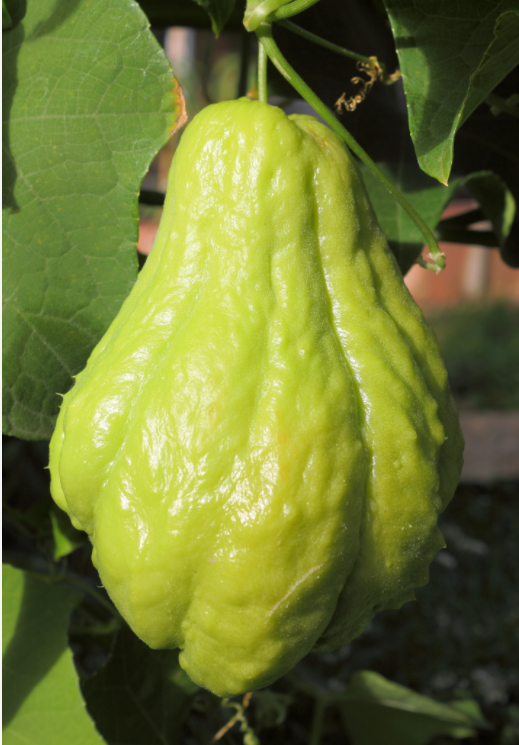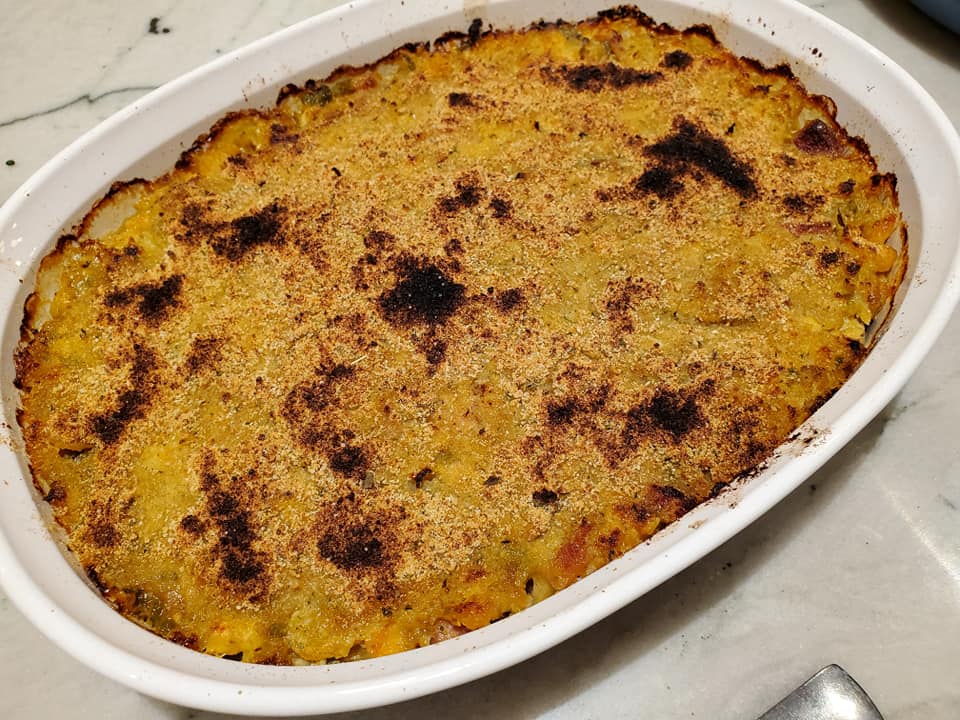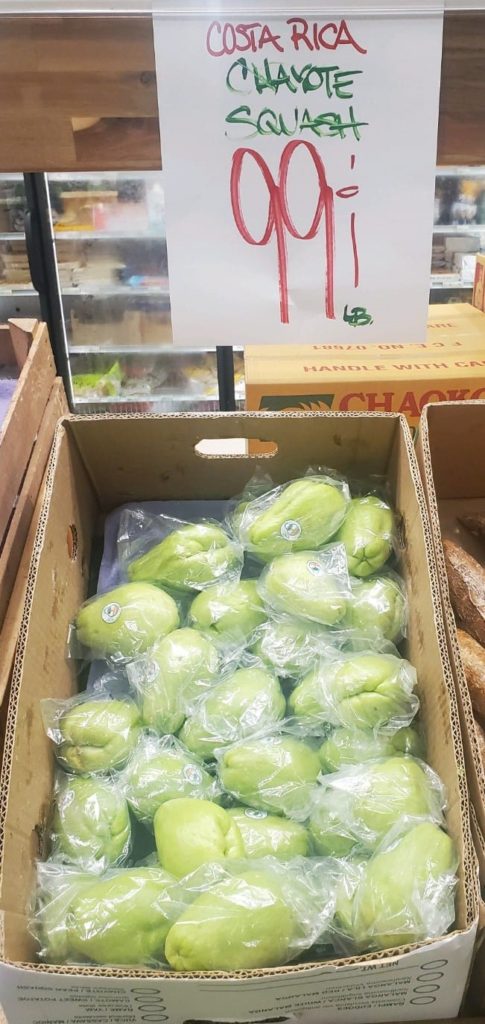Creole Louisiana Mirliton Recipe
Happy fall, y’all!
Today’s post comes with a family recipe for one of my childhood favorite foods. But, we need to dig into some world history first!
What does Latin America, Central America and the Caribbean have to do with my Creole Louisiana Mirlton recipe? Read on…
Mirliton, [MEL-ee-tawn], [MER-lee-tawn], or [MEEL-ee-tawn] in Louisiana, [MEER-lee-tawn] in French, is a south Louisiana staple. The squash, called chayote [chah·YOH·teh] in Spanish, is native to Mesoamerica. This old world plant has documented roots in Louisiana dated in the mid-1800s. However, evidence suggests it reached the Louisiana colony much earlier. In one theory, the plant came to the port city of New Orleans, while a Spanish colony, via other Spanish colonies in Latin America. Another explanation is that it came with colonizers (including gens de couleur libres) and the people they enslaved that fled to New Orleans from Saint-Domingue and Cuba from 1791 to 1815, during and following the slave rebellion that created the Republic of Haiti in 1804. The evidence supporting this latter theory is the fact that there are two places that use the word “mirliton” for this squash—Louisiana and the former French colony renamed Haiti after the revolution. In English, Anglo-Americans call this squash a “vegetable pear” because of its shape. So was the staple called chayote brought to colonial Louisiana during the Spanish period? If so, did the influx of roughly 15,000 French-speakers from Saint-Domingue and Cuba that arrived in New Orleans influence using the French name for the squash? Or was it brought to Louisiana by Saint-Dominguans?
Food history is so fascinating!
This squash is technically a fruit and grows on a vine in warm climates. I remember mirliton growing in my grandmother’s backyard in New Orleans. The plant grew all over the city before Hurricane Katrina decimated the plant. As part of hurricane recovery, a nonprofit organization dedicated itself to the revival and conservation of the Louisiana mirliton.

Чайот.JPG” by SKas is licensed with CC BY-SA 4.0
Below is the recipe passed on to me that I will pass on to my children.

Louisiana Creole Mirliton Recipe
Ingredients and prep:
- 6-8 medium mirlitons
- 2 pounds gulf shrimp
- 1 pound white lump crab meat
- 1 pound cooked ham, cubed
- 1 medium bell peppers, diced
- 1 medium onions, diced
- 1 stalk celery, diced
- 2 bay leaves
- ½ cup parsley, minced
- 1 teaspoon thyme
- 2 cloves garlic, minced
- 1 stick butter
- Louisiana Creole seasoning
- ½ tsp cayenne
- 1 tsp paprika
- ½ tsp dried oregano
- ½ tsp dried thyme
- 1 tbsp dried garlic powder
- ½ tsp black pepper
- 1 teaspoon salt
- ½ tsp onion powder
- cayenne pepper to taste
- Italian bread crumbs
Directions:
- Preheat oven to 350°F (176 °C).
- Boil whole mirlitons in salted water until tender, about 45 minutes. Remove from water and set aside to cool.
- While the mirlitons cool, sauté onion, celery, and bell pepper in butter until soft, about 5 minutes. Add ham, garlic, thyme, and bay leaves. Cook another 20 minutes.
- Sprinkle shrimp with Louisiana Creole seasoning. Set aside.
- Cut cooled mirlitons in half and remove the seeds and pods. Scoop out the mirliton flesh and place into a colander. Lightly squeeze out excess moisture. TIP: If you want to stuff the shells instead of making a casserole, score on the sides before scooping to leave a little flesh on the sides. The skin tears easily.
- Add drained mirlitons to Dutch oven. Add cayenne. TIP: If there’s a lot of water, add a tablespoon of breadcrumbs to thicken or cook on medium-low heat, uncovered, until most of the liquid evaporates.
- Add seasoned shrimp. Cook about 20 minutes.
- Fold in crabmeat and parsley. Put mixture in mirliton shells.
- Top with bread crumbs. Bake for 20-30 minutes or until bread crumbs turn brown.
- Serve with Louisiana French Bread or French baguette.
Bon appétit!
OPTION: Make as a casserole.


You may think I’m crazy but the most memorable meal I had in New Orleans was fried blue crab with SpaghettiOs. Call it Mardi Gras gravy to your friends, but it tastes great with crab meat and creole seasoning.
Who knew!
I followed the recipe except I cut all the murmurings into chunks and placed in casserole dish. I added an eggplant when I sauté the onions celery, garlic, and bell pepper. I also browned ground turkey and some smoked sausage. Combined all and topped with homemade bread Croutons seasoned with Cajun seasonings. I also added some cubed smoked Gouda cheese about 8 minutes before it was done. It was so delicious. Thank you for the recipe.
You are most welcome! I’m happy you added ingredients you loved and it turned out delicious.
This is a wonderful recipe! Absolutely delicious!!!
I used to have them when I lived in Louisiana, but they are harder to find since I moved to north Texas. My next project is to try to grow some. I wish I could grow the ones like from New Orleans.
Thanks, Barbara! Good luck growing mirliton.
I am from New Orleans and love this stuff. The only thing I do different is to add a small amount of parmason cheese to the recipe
Ooooh…I should try that!
I made this recipe last night, minus the breadcrumbs. I also cubed up a couple extra mirlitons and sauteed them before adding them to the recipe. It has a very good taste.
We love the flavor, but the kids didn’t like the texture. It seemed to crumble apart in the plate. Tonight I am going to use the leftovers to turn into a cornbread based casserole.
The texture of the ingredients in the leftovers made me think this could be transformed into a soup/gumbo type dish. My ten year old grandson will eat soup any day of the week!
My curiosity is, what would make a better soup base for this recipe? A brown gumbo type base or a red tomato base?
Thanks in advance for your ideas.
Hi Bobbie,
I hadn’t thought of using cornbread to hold the mirliton together, but that would work. There’s actually a Mirliton and Soup recipe over at the Explore Louisiana website. I haven’t made it but it sounds delicious. I don’t think I would use a tomato base with the mirliton. https://www.explorelouisiana.com/culinary/recipes/mirliton-and-shrimp-soup
Thanks for stopping by!
Keila
Same as our family recipe. Love this stuff
I was introduced to mirliton by a woman from New Orlean decades ago. I’ve been hooked ever since. This is the kind of history I crave. I know kids would respond so favorably to this. Hmmmm
… thinking thoughts. LOL Love this wonderful post.
Thanks Pamela! Teaching world history and geography through food is interesting and so delicious!
They were always on my family’s table stuffed with either ham, seafood or ground beef and of course the required/ Louisiana seasonings: onion, bell pepper and celery. I was fascinated when I spent a month on the island of Nevis to learn that they are called “Christophene” in that part of the Caribbean. They simply boil them and serve them sliced with butter and lemon, salt and pepper. Sadly, I seldom see them anymore. Your recipe looks fabulous.
Thanks Vaughn! I was sad to read about all the vines destroyed by Katrina. And I found so many different varieties, some dark green, others with white skin. We always had mirliton on our holiday table.